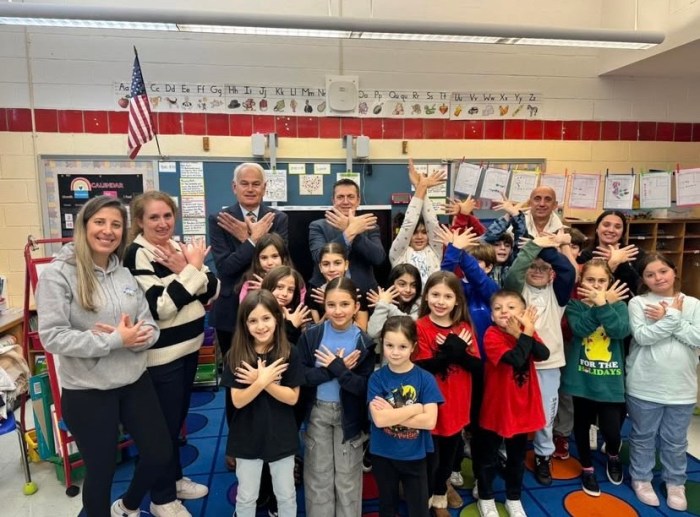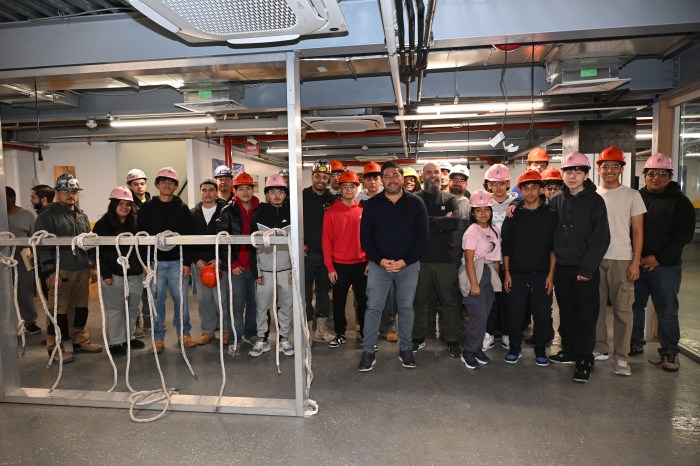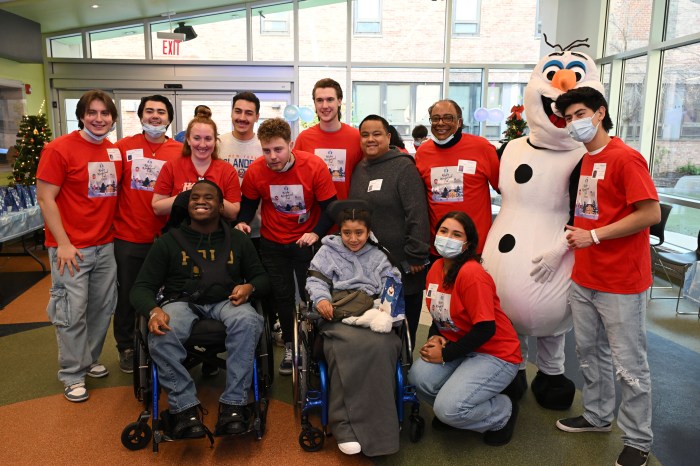Driving past 79th Street and Northern Boulevard in Jackson Heights, one might never notice a New York City rarity just off the corner – a private, secular private school for toddlers through 12th grade – the Garden School.
In 1923, when Jackson Heights was still largely rural and “garden apartments” were just being built, a group of parents banded together with educators and through private donations, started “The Garden Country Day School.” as a nursery in one room of the nearby Laburnum Court Apartments.
By 1925, enrollment through 6th grade was added to the existing K through 3 classes. In 1927, the directors turned over control to headmaster Otis Flower, and with the help of the Queensboro Corporation, later that year acquired the property it now occupies, at 33-26 79th Street.
“The site was a private tennis club. The original school building was the clubhouse. We’re still using it,” said the school’s fifth and current headmaster, Richard Marotta, Ph.D. “I’ve always been tickled by a man named “Flower” being headmaster of the Garden school,” he confessed.
In the spring of 1929, Garden Country Day School had added a full compliment of grades and graduating its first high school class of three students.
Within a few years it was chartered under New York State guidelines for not-for-profit schools as an independent school with a board of trustees. Somewhere along the line, Marotta said, the name was shortened to The Garden School, although he admitted a preference for the original name
Since that time, the school has grown, adding classrooms, a gymnasium, two libraries and an outdoor pool. What hasn’t grown all that much is the enrollment.
Roughly 260 children from nursery through Grade 12 are currently enrolled. A child must reach two years of age by December 31 to be enrolled in September.
The commitment remains the same, too.
The Garden School, according to its mission statement, “in the Independent tradition, affirms the primacy of learning. We empower every student in our educationally-diverse community to meet responsibly the challenges of every day life by promoting academic achievement, personal development and social involvement.”
Class sizes are small. On average, classes are composed 12 children or less. In Advanced Placement classes there could be as few as three students. The school offers “AP” classes in seven subjects: English, Biology, Calculus, French, Spanish, American and European History.
“I feel we’re the most important independent private school in the city, because we deliver a quality, secular education to the children of Queens,” Marotta said pointedly. “I believe very passionately about it.”
The quality of the education at the Garden School is apparent. Of 31 young scholars in the 2008 graduating class, all went on to college. This year’s class is smaller – 28 – but the expectation is that all of them will enter institutions of higher learning. “They’re applying now,” Marotta said.
Such attentive and focused education doesn’t come cheap. Tuition is $15,500 per academic year. “We know that’s a lot of money these days, so we’ve decided to freeze tuition for next year,” Marotta admitted. “But that’s what buys the small class size,” he pointed out.
The school is dedicated to helping parents who want the very best education for their children. “Historically, about 15 percent of our budget goes to tuition assistance,” Marotta said, adding, “Last year it jumped to 19 percent.”
Almost all their funding comes from tuition and donations. “We get a very small grant from the LaGuardia Kiwanis to run a Saturday writing project that draws 75 percent of the participants from the immediate neighborhood,” Marotta said.
“Part of our ‘five year plan’ is to build an endowment around our current William R Hughes Scholarship Fund [named after the school’s second headmaster] it’s a goal of ours,” he added.
A quiet and scholarly man, Marotta can’t help but get a little superlative in talking about the Garden School. He declared confidently that it’s “the place for your child to learn and be safe socially, academically and physically – to have the opportunity to grow and not be held back by bureaucracy.”
As for the current educational trend to break education into smaller and smaller segments, he gestures around the hallway as classes change. “We don’t have a problem here mixing toddlers with high school students. The older ones look out for the younger ones – the ‘little kids’ feel great when the ‘big kids’ talk to them because they look up to them.”
“We’re a big family.”


































